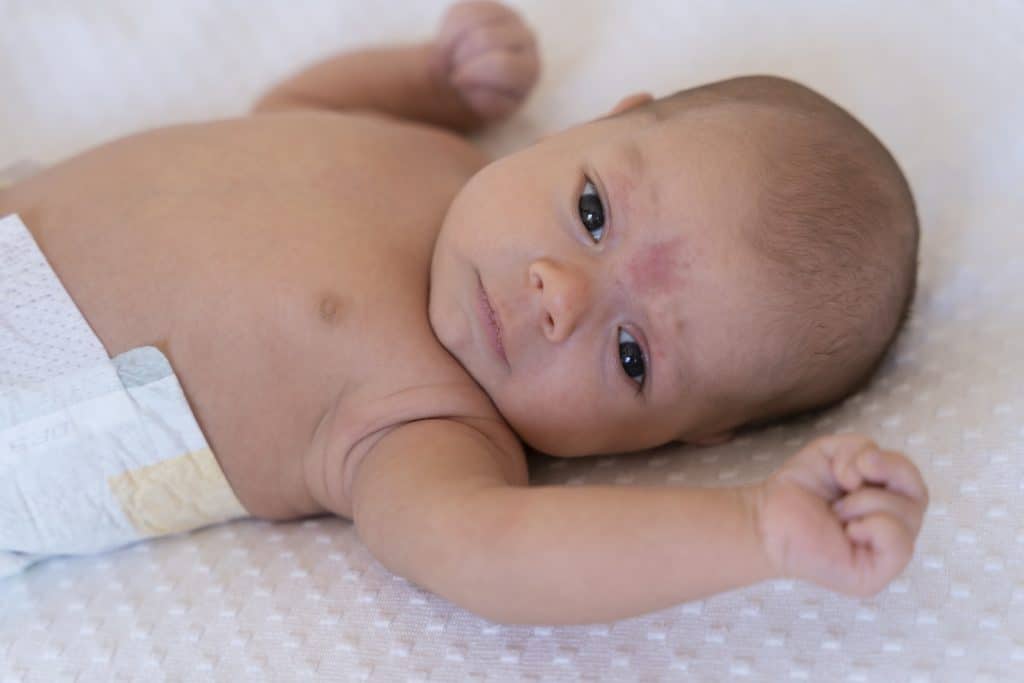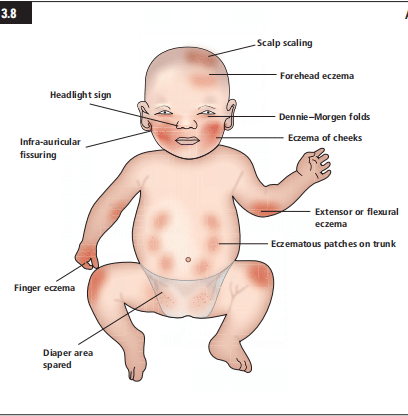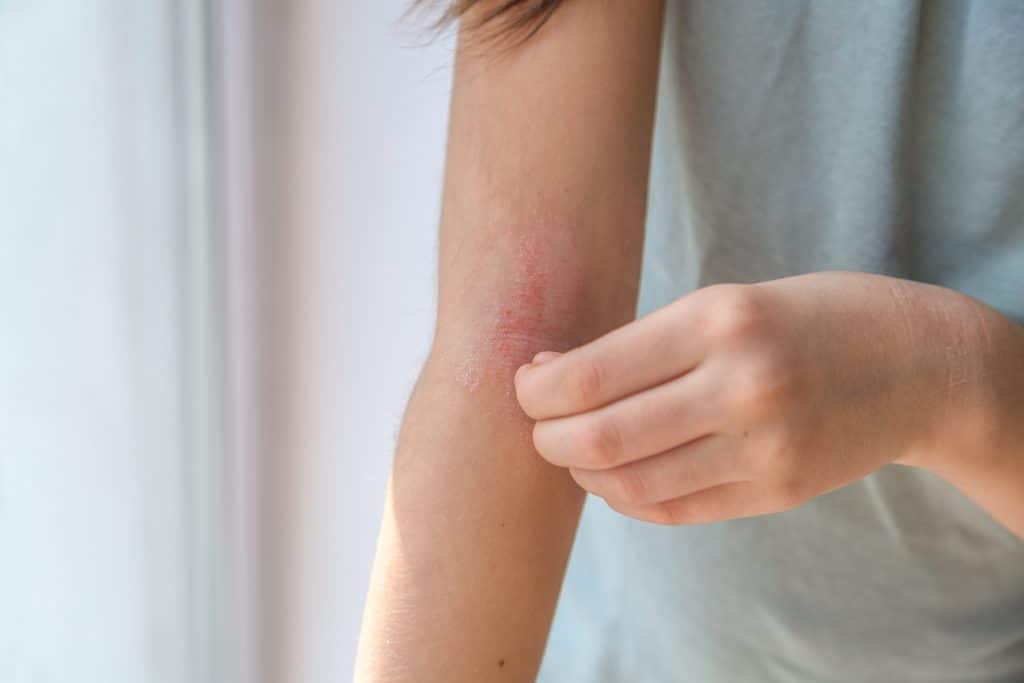Effective Infant Eczema Treatments: A Parent’s Guide to Bragan Atopic Cream
Infant eczema is a common skin condition that often leaves parents searching for relief. Red, dry, and itchy patches on a baby’s delicate skin can be tough to manage. Effective infant eczema treatment isn’t just about soothing discomfort—it’s key to preventing further irritation and protecting your baby’s skin barrier.
Bragan Skincare’s Atopic Cream is specially crafted to address this need. Infused with snail slime, a traditional remedy used for centuries, it offers proven benefits to calm and heal sensitive skin. Snail mucin is rich in components like glycolic acid, hyaluronic acid, and proteins that hydrate, repair, and restore.
Learn how this unique ingredient can provide gentle relief for your baby’s skin with our specially formulated infant eczema cream. Empower your baby’s skin with natural, effective care.

Understanding Infant Eczema: Infant Eczema Treatment
Infant eczema is a skin condition that causes discomfort and concern for many parents. It often appears as patches of dry, itchy, or inflamed skin, affecting babies during their early months. Understanding its causes and symptoms is crucial for effective management and relief.
Causes of Infant Eczema
The exact cause of infant eczema isn’t fully understood, but both genetic and environmental factors play a significant role. If there’s a family history of eczema, asthma, or hay fever, your baby may be at higher risk. This is because eczema often runs in families and is linked to an overactive immune response.
Environmental factors can also trigger or worsen eczema. Exposure to certain irritants, allergens, or changes in weather may prompt flare-ups. For example:
- Irritants: Soaps, detergents, or synthetic fabrics.
- Allergens: Dust mites, animal dander, or pollen.
- Weather changes: Extremely dry or humid conditions.
By identifying potential triggers, parents can reduce the chance of worsening their baby’s symptoms.
Symptoms of Infant Eczema
Infant eczema symptoms can vary, but there are common signs to look out for. These include:
- Dry, scaly patches: These often appear on the face, scalp, arms, or legs.
- Redness and inflammation: Affected areas turn red and may feel warm to the touch.
- Intense itching: Babies may scratch the area, leading to discomfort or even skin damage.
- Crusting or oozing: In severe cases, the skin may weep or form a crust.
Early identification of symptoms can help in choosing the right treatment to protect your baby’s delicate skin. Consider using products like our infant eczema cream, designed to soothe dryness and itching while providing lasting hydration.
Treatment Options for Infant Eczema
Eczema can be challenging for parents to manage, but understanding treatment options makes a significant difference. There are several approaches to treating infant eczema, each playing an essential role in soothing and protecting delicate skin.
Moisturisers and Emollients: The Role of Daily Hydration
Moisturisers and emollients form the cornerstone of infant eczema care. They not only hydrate the skin but act as a protective barrier to lock in moisture and prevent irritants from causing further damage. Regular application can ease itching, reduce redness, and help repair the skin barrier.
What’s the secret? Emollients are lipid-rich, which means they fill the gaps between skin cells, creating a smooth, protective surface. When selecting a moisturiser, choose one designed for sensitive skin, free from harsh chemicals, fragrances, or alcohol. Applying moisturisers after bathing is particularly effective—wet skin absorbs the product better!
Topical Steroids: When Extra Help is Needed
Topical steroids are another effective option for managing eczema flare-ups. These treatments reduce inflammation and calm redness, helping to control those especially troubling eruptions. They’re often prescribed in varying strengths and used only under a doctor’s supervision.
For infants, low-potency steroids are typically recommended for short-term use. It’s crucial to follow medical advice to ensure safety. While these medications can bring quick relief, they should never replace a consistent skincare routine with moisturisers. Always consult with your healthcare provider before introducing steroids.
Bragan Skincare’s Atopic Cream: Gentle Relief with Snail Mucin
For parents looking for natural yet effective care, Bragan Skincare’s Atopic Cream is a standout. Specially formulated for sensitive, eczema-prone skin, this cream harnesses the benefits of snail mucin, a time-tested ingredient known for its restorative properties. It’s an ideal option for soothing irritation while promoting healing.
What makes snail mucin so special? It’s packed with beneficial components like glycolic acid, which gently exfoliates and revitalises; hyaluronic acid, which ensures deep hydration; and essential proteins that support skin repair. This combination works wonders to relieve dryness and protect your baby’s skin.
Snail mucin has been used for centuries to tackle various skin issues, and this tradition carries forward in Bragan’s Atopic Cream. It’s crafted with care to provide gentle, effective relief for babies. Learn more about how this unique formulation can make a difference by exploring Bragan Skincare’s Atopic Cream. Give your little one the comfort they deserve with this innovative skincare solution.

The Benefits of Snail Mucin: Infant Eczema Treatment
Snail mucin is fast becoming a beloved ingredient in skincare, with its gentle yet powerful properties making it highly suitable for sensitive skin. Parents looking for a natural solution for infant eczema may find this unique option ideal for restoring and protecting their baby’s delicate skin.
Components of Snail Mucin: Identify key components such as glycoproteins, glycolic acid and how they aid skin healing.
Snail mucin boasts an impressive array of components that deliver multiple benefits for the skin. Here’s what makes it so effective:
- Glycoproteins: These are key for cellular communication and repair. They help speed up the healing of damaged skin, making them particularly useful for eczema-prone areas.
- Glycolic acid: Known for its exfoliative properties, glycolic acid gently removes dead skin cells, promoting a smoother, healthier surface without damaging the delicate balance of baby skin.
- Hyaluronic acid: A hydration powerhouse, it locks in moisture, keeping the skin deeply nourished and preventing dryness. This is critical in managing flaky and parched eczema patches.
- Antimicrobial peptides: These natural defenders protect the skin from harmful bacteria, reducing the risk of infection in cracked or irritated areas.
- Proteins and enzymes: Essential for restoring and fortifying the skin barrier, these components work in harmony with the skin’s natural rhythms.

By offering a blend of hydration, repair, and gentle exfoliation, snail mucin effectively supports irritated and damaged skin caused by eczema.
How Snail Mucin Helps Skin Health: Detail how snail mucin moisturises, repairs, and protects the skin.
Snail mucin’s unique structure allows it to address key skincare concerns, making it particularly effective for treating irritated and sensitive conditions like infant eczema. Here’s how it works:
- Moisturising: Snail mucin provides deep hydration, replenishing dry and cracked skin while maintaining a balanced moisture barrier. This stops the cycle of dryness and irritation that often plagues eczema sufferers.
- Repairing: Its various natural components promote faster skin renewal, which can calm inflamed areas and help recover irritated patches.
- Protecting: The antimicrobial and skin-strengthening properties of snail mucin defend against environmental triggers, reducing further damage to the baby’s delicate skin barrier.
When used in products like Bragan Skincare’s Atopic Cream, it not only soothes but also lays the groundwork for healthier skin over time. Its application is a natural, effective choice for eczema-prone skin.
Practical Tips for Managing Infant Eczema
While managing infant eczema can often feel overwhelming, having the right routine and understanding is crucial. Below, we’ve outlined practical tips to support your baby’s delicate skin and minimise flare-ups.
Bathing and Moisturising Routine: Suggest an ideal routine for keeping skin hydrated.
Bathing and moisturising play a critical role in keeping eczema under control. Proper hydration during and after a bath can soothe the skin and lock in much-needed moisture. Here’s how you can build an effective daily routine:
- Short Baths: Limit baths to 5-10 minutes using lukewarm water; hot water can dry out the skin.
- Gentle Cleansers: Opt for soap-free, fragrance-free cleansers designed for sensitive skin.
- Pat Dry, Don’t Rub: After the bath, gently pat the skin dry with a soft towel, leaving it slightly damp to trap moisture.
- Quick Moisturising: Apply an emollient or eczema-friendly cream, like our infant eczema cream, within three minutes of bathing. This ensures maximum hydration.
Consistency is key. By maintaining this routine, you’ll notice improved skin texture and reduced irritation over time.
Choosing the Right Clothing: Advise on clothing types that minimise irritation.
The clothes your baby wears can either soothe or aggravate eczema. Delicate skin requires fabrics and care that promote comfort while minimising irritation. Here’s what to consider when dressing your little one:
- Opt for Soft and Breathable Fabrics: Choose cotton or bamboo materials over synthetic or rough fabrics.
- Avoid Tight Clothing: Loose-fitting clothes prevent unnecessary friction and allow air to circulate.
- Wash with Care: Use detergent free from fragrances and harsh chemicals. Rinse clothes thoroughly to remove residue.
- Dress for the Weather: Overheating can lead to increased sweating, which may worsen eczema symptoms.
Paying attention to clothing choices ensures your baby’s skin remains comfortable throughout the day.
Identifying Triggers: Share common triggers and how to avoid them.
Effective eczema management also involves identifying and avoiding potential triggers. Every baby is different, but some common triggers may aggravate the condition:
- Irritants: Soaps, perfumes, and synthetic fabrics are frequent culprits.
- Environmental Factors: Dry air, pollen, or pet dander could worsen the skin.
- Dietary Factors: For breastfeeding mothers, certain foods like dairy or eggs might impact their baby’s eczema.
- Heat and Sweat: Keeping the baby cool and comfortable can reduce flare-ups.
Keeping a diary can be valuable in tracking possible triggers and recognising patterns over time. By eliminating or managing these triggers, you’ll create a calmer skincare environment for your baby.
These practical ideas empower you to build a care routine that works. Alongside these steps, consider the benefits of an eczema-specific product like our infant eczema cream to keep your baby’s skin soft, hydrated, and protected.
Infant Eczema Treatment: Q&A
Q1. What is infant eczema?
Infant eczema (atopic dermatitis) is a common skin condition. The skin becomes dry, itchy, and red. It can flare and then settle. It often appears on cheeks, scalp, and skin folds.
Q2. What causes it?
It’s linked to a sensitive skin barrier and family history of eczema, asthma, or hay fever. Triggers can include soaps, fragrance, heat, sweat, drool, rough fabrics, and infections.
Q3. Is it contagious?
No. Eczema is not an infection and cannot be passed from one child to another.
Q4. What’s the first step in treatment?
Moisturise. A lot. Use a bland, fragrance-free emollient several times daily. Apply after every bath and nappy change if skin is very dry.
Q5. Cream, lotion, or ointment—what’s best?
Ointments are greasier and lock in water well. Creams are lighter and suit daytime use. Lotions are thinnest and often not rich enough. Many parents use an ointment at night and a cream by day.
Q6. How should I bathe my baby?
Use lukewarm water. Keep baths short (5–10 minutes). Avoid bubble bath and strong cleansers. Pat dry—don’t rub. Then apply emollient within 3 minutes to seal in moisture.
Q7. Which products should I avoid?
Avoid fragrance, essential oils on broken skin, harsh detergents, and alcohol-heavy products. Keep routines simple. Fewer products. Fewer irritants.
Q8. How often should I moisturise?
At least twice daily. During flares, increase to 3–4 times daily. Use generous amounts. Think “little and often.”
Q9. Can I use steroid creams on infants?
Only as advised by your GP or paediatrician. Mild topical steroids are commonly used for short periods to calm flares. Follow the exact plan you’re given.
Q10. What are wet wraps?
Wet wrapping uses damp layers over emollient (and prescribed creams if advised) to boost hydration and reduce scratching. Ask your clinician to show you the correct method before trying.
Q11. How do I handle itching and scratching?
Keep nails short. Use soft cotton mitts for sleep if needed. Cool the skin with a fan or a cool compress. Keep rooms comfortably cool at night.
Q12. Could food be a trigger?
Sometimes—but not always. Do not cut out major foods without medical advice. If you suspect a link (e.g., flares after specific feeds), discuss with your GP or a paediatric allergy specialist.
Q13. How do I spot infection?
Look for honey-coloured crusts, weeping, yellow pus, sudden worsening, or fever. If you see these, seek medical help promptly.
Q14. What fabrics are best?
Choose breathable cotton layers. Avoid rough wool and tight, heat-trapping synthetics. Wash new clothes before first wear.
Q15. Any laundry tips?
Use a non-bio, fragrance-free detergent. Run an extra rinse cycle. Avoid fabric softeners with fragrance.
Q16. Can sunscreen be used on babies with eczema?
Yes—choose a high-SPF, fragrance-free product. Patch test first. Use shade and hats. For babies under 6 months, ask your healthcare professional and prioritise shade and clothing.
Q17. Will my baby grow out of it?
Many children improve with age, especially with good daily care. Some will have occasional flares into later childhood.
Q18. When should I see a doctor?
If the rash is severe, keeps returning, disturbs sleep, looks infected, or you’re unsure what to use—see your GP or paediatrician.
Q19. How can I simplify our daily routine?
Keep it to three steps: gentle cleanse → moisturise generously → treat flares as advised by your clinician. Repeat daily. Keep it consistent.
Q20. Can a fragrance-free emollient with snail mucin help?
Many parents look for barrier-supportive, fragrance-free formulas that hydrate and soothe. Bragan Skincare’s Atopic Cream is designed for sensitive, eczema-prone skin and uses snail mucin with gentle moisturisers. Always patch test first and follow your clinician’s plan during flares.
Q21. Any tips for better sleep during flares?
Apply emollient before bed, keep the room cool, use cotton sleepwear, trim nails, and consider a short clinician-approved treatment burst for flares that disrupt sleep.
Q22. Is cradle cap the same as eczema?
No. Cradle cap (seborrhoeic dermatitis) shows greasy scales on the scalp and is usually not itchy. Eczema is drier and itchy. They can coexist. Care differs—ask your GP if unsure.
Q23. What about dummy/drool rashes around the mouth?
Gently cleanse and pat dry. Apply a thin layer of emollient as a moisture barrier before naps and bedtime. Avoid fragranced lip or face products.
Q24. How do seasons affect eczema?
Winter air is dry—skin often needs richer ointments. Summer heat and sweat can irritate—cool the skin, rinse sweat off, and re-apply a light emollient.
Q25. Any daycare/nursery guidance?
Provide a small, labelled emollient. Share a simple care plan: when to moisturise, what to avoid, and when to call you.
Quick safety notes
- This Q&A is general information, not medical advice.
- For diagnosis and personalised treatment, please consult your GP or paediatrician.
- Always patch test new products and stop if irritation occurs
Conclusion: Infant Eczema Treatment
Infant eczema can be a challenging condition for parents to manage, but effective treatment options are within reach. With the right care routine, supportive lifestyle adjustments, and specially-formulated products, your baby’s skin can find relief and protection. Whether it’s choosing the right moisturisers, avoiding common triggers, or exploring the remarkable benefits of snail mucin, practical solutions are at hand.
For parents seeking a natural and effective remedy, Bragan Skincare’s infant eczema cream offers a tailored approach. Gentle on delicate skin but powerful in its effects, it supports healing, hydration, and comfort with every use.
Atopic Cream for Sensitive Skin
Our atopic cream is designed to treat skin conditions. These may be inherited or as a result of sensitivity to allergens such as soaps, detergents, stress and the weather. Made from snail mucin – a natural ingredient with a wealth of healing, hydrating, and anti-inflammatory properties. Our Atopic Cream is dermatologically tested and effective in treating chronic skin conditions including eczema, psoriasis, and dermatitis. It brings relief to those suffering from irritated or itchy skin, rashes and allergic reactions. Snail mucin also reduces scar tissue and stretch marks and is soothing for dry and sensitive skin. Incorporate snail mucin cream…
Featured Bragan Skincare Products
-
€39.99 – €100.00Price range: €39.99 through €100.00Select options This product has multiple variants. The options may be chosen on the product page
-
€100.00Select options This product has multiple variants. The options may be chosen on the product page


